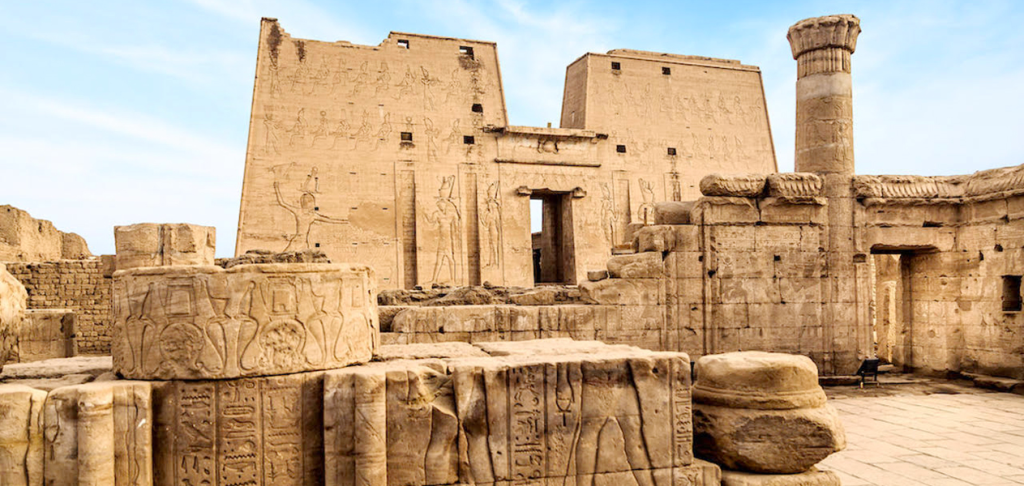
Welcome, fellow history enthusiasts, to our authority blog post dedicated to unraveling the mysteries of the captivating Edfu Temple. Nestled on the west bank of the Nile River in Upper Egypt, this ancient architectural marvel serves as a testament to the grandeur and cultural significance of ancient Egyptian civilization. Join us as we embark on a virtual journey back in time to explore the fascinating history, remarkable features, and enduring allure of the Edfu Temple.
- Discovering the Historical Context:
The Edfu Temple, also known as the Temple of Horus, dates back to the Ptolemaic period of ancient Egypt, specifically between 237 and 57 BCE. It was constructed on the site believed to be the birthplace of the falcon-headed god Horus, making it a revered destination for religious pilgrimage during that era. The temple’s construction was completed over a span of several generations, resulting in its remarkable state of preservation.
- Architectural Splendor:
The Edfu Temple exemplifies the architectural prowess and precision of the ancient Egyptians. Built primarily with sandstone, the temple boasts a traditional design, characterized by towering walls adorned with intricate hieroglyphs and elaborate reliefs. The colossal entrance pylon, towering over 118 feet (36 meters) high, draws visitors into the awe-inspiring complex.
Inside, visitors encounter a series of beautifully decorated halls, courts, and chambers that make up the temple. Among its most notable features is the Hypostyle Hall, featuring 32 massive columns towering to a height of 60 feet (18 meters). The attention to detail and the meticulous preservation of the temple’s elements continue to astound archaeologists and visitors alike.
- A Journey through Mythology:
The Edfu Temple provides an immersive experience into the mythology and religious beliefs of ancient Egypt. Dedicated to the worship of Horus, the temple complex served as the setting for the reenactment of the mythological conflict between Horus and his uncle Seth. The “Feast of the Beautiful Meeting,” a symbolic reunion between Horus and his wife, Hathor, took place within these hallowed halls.
The walls of the Edfu Temple serve as an expansive canvas, depicting religious scenes, mythological tales, and historical events. The intricate reliefs vividly portray the mythology of ancient Egypt, allowing visitors to immerse themselves in the stories of gods, pharaohs, and the afterlife.
- Preservation and Restoration:
Thanks to ongoing preservation efforts, the Edfu Temple has managed to retain much of its original splendor. The temple underwent extensive restoration during the 19th and 20th centuries, ensuring its survival for future generations. These preservation initiatives enable visitors to experience the temple in much the same way as ancient Egyptians did centuries ago, offering a glimpse into the past that is truly awe-inspiring.
- Visitor Experience and Modern Significance:
Today, the Edfu Temple stands as a testament to the enduring legacy of ancient Egypt and continues to attract visitors from around the world. Its exceptional preservation, combined with the immersive storytelling of ancient mythology, creates an unparalleled experience for tourists and scholars alike. Exploring the temple’s halls and chambers is a remarkable journey back in time, fostering a deeper understanding of the ancient Egyptian civilization’s cultural, religious, and architectural achievements.

